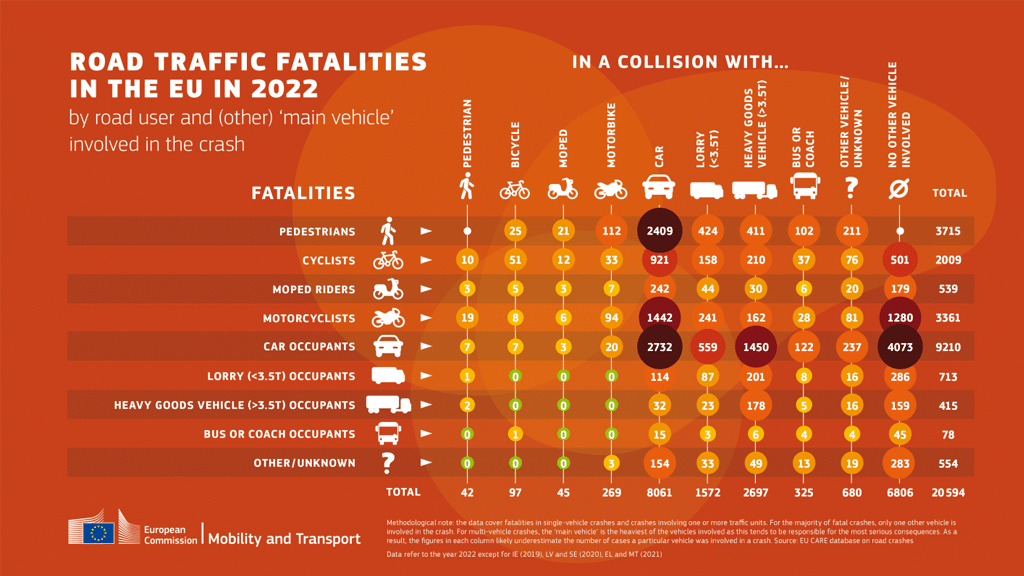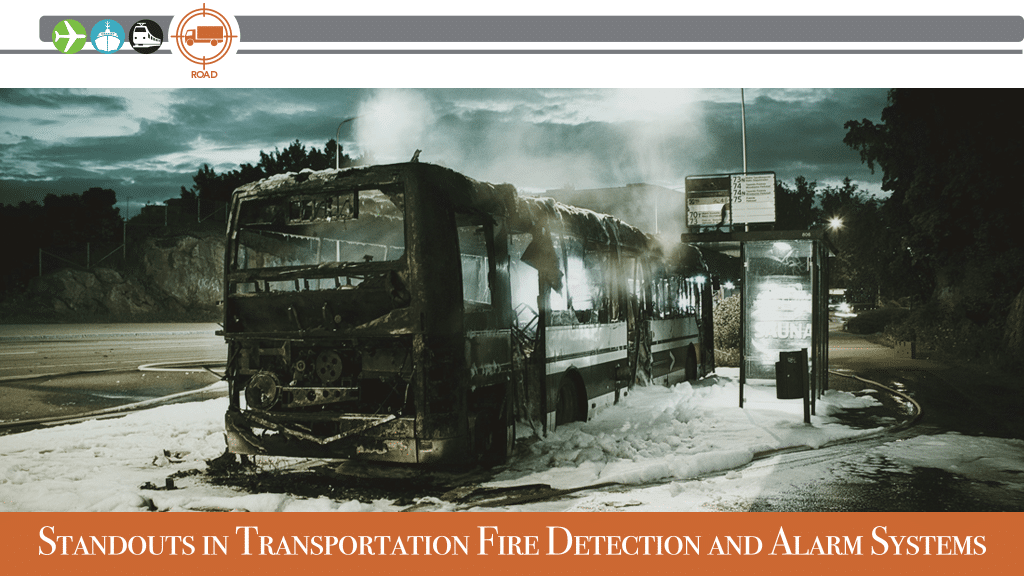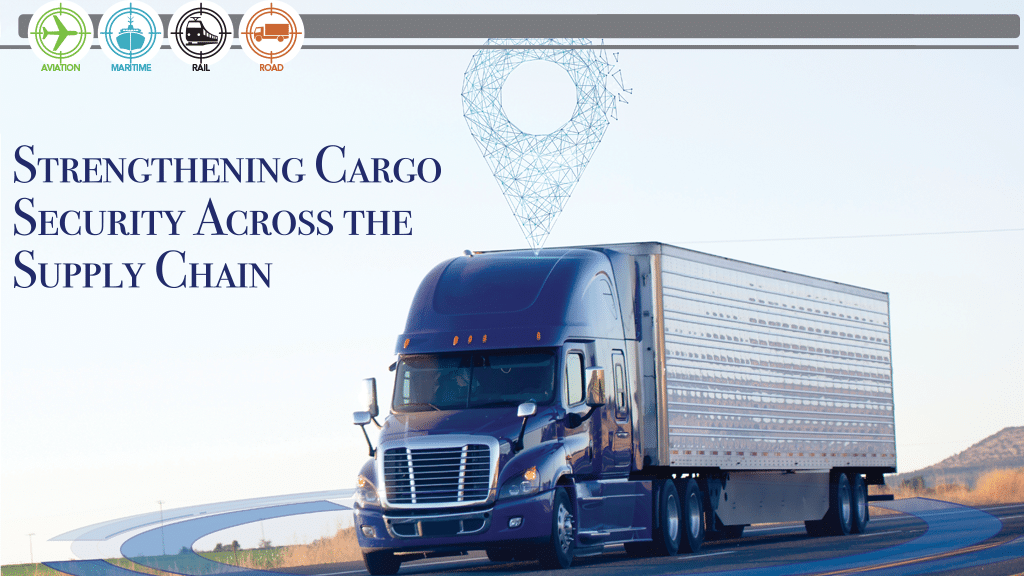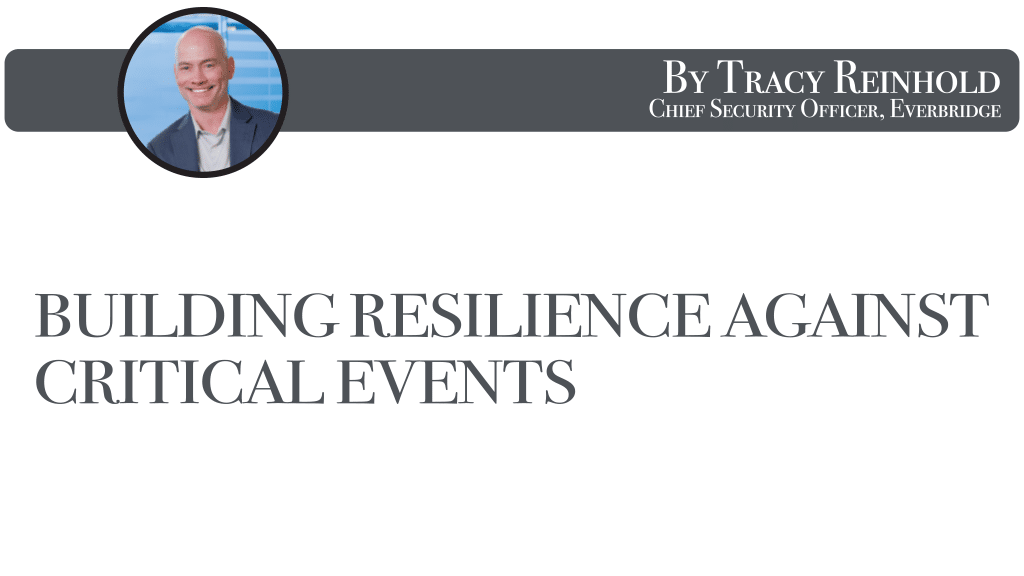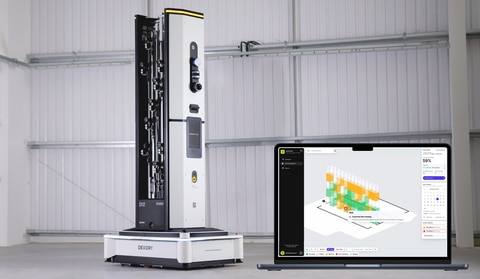Four zebras broke free from a trailer they were being transported in, near Bend, Washington on Sunday April 28. Kristine Keltgen purchased the zebras from a farm in Washington State and was transporting them on Interstate 90 to a petting zoo she runs in Anaconda, Mont. She became aware that the latch on the zebras’ trailer was loose. She stopped to fix the latch and the zebras “bolted out.” The escape occurred near a highway exit, and nearby residents, police officers and volunteers rallied to corral them back to safety. One person had specific expertise in wrangling loose animals. He is David Danton, of Mount Vernon, Wash., who worked for 15 years as a rodeo clown. Danton and his wife, Julie, were driving home from a cattle drive in eastern Washington when they stopped to assist in the recapture of the zebras in North Bend, Wash., 30 miles east of Seattle. “It was kind of divine intervention — we happened to be in the exact spot and had the knowledge,” Julie Danton said in a story in the New York Times. “Animal control showed up to help, police showed up and every neighbor showed up to help — or just look at the zebras — because it’s not every day you get zebras in your neighborhood,” said Megan Dammann, a North Bend resident. Dammann said she raced to the area after seeing a post about the zebras on a community Facebook page. Former rodeo clown Danton said he built makeshift gates out of rope, metal panels and a garden hose, and got two of the zebras to run into a pen on a horse farm. Then, he said, he helped build an “alleyway” out of metal panels to usher the zebras safely into a large trailer. While the Dantons helped corral two of the zebras on a horse farm, residents nearby helped shoo a third zebra into a fenced-in yard and then shut the gate. The fourth zebra had not been captured as of Monday the 29th of April.
Category: Road
2023 Figures Show Stalling Progress in Reducing Road Fatalities
The European Commission for Mobility and Transport published preliminary figures on road fatalities for 2023. Around 20,400 people were killed in road crashes in the EU last year, a small 1% decrease in 2022. Despite some progress since the baseline year of 2019, few Member States are on track to meet the target of halving the number of road deaths by 2030.
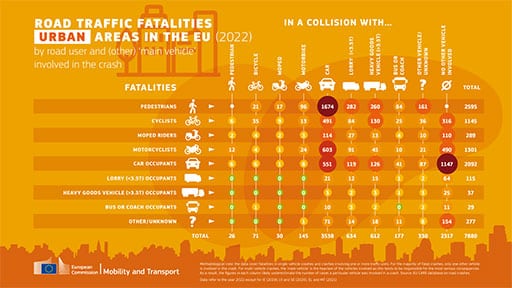
EU-wide, road deaths in 2023 fell by 1% on the previous year. While this represents around 2,360 fewer fatalities (-10%) compared with 2019, the downward trend has flatlined in several Member States.
Since 2019, the number of road deaths has scarcely fallen in Spain, France and Italy, while it has risen in Ireland, Latvia, the Netherlands, Slovakia and Sweden. In contrast, over the last four years, Belgium, Czechia, Denmark, Hungary and Poland are on track to meet the 50% reduction target in road deaths and serious injuries by 2030 (it is important to note that this is based on preliminary and often partial data).
The overall ranking of countries’ fatality rates has not changed significantly, with the safest roads still found in Sweden (22 deaths per one million inhabitants) and Denmark (27/million). Bulgaria (82/million) and Romania (81/million) reported the highest fatality rates in 2023. The EU average was 46 road deaths per million inhabitants.
The available EU-wide data for 2022 (detailed 2023 data is not yet available) shows that 52% of road traffic fatalities occurred on rural roads, versus 38% in urban areas and 9% on motorways.
The trend in the number of cyclists killed on EU roads is a serious concern: more than 2,000 cyclists were killed in 2022. This is the only main road user group not to see a significant drop in fatalities over the last decade, notably due to a persistent lack of appropriate infrastructure and unsafe behavior of all road users such as speeding, distraction and driving under the influence of alcohol and drugs.
Men accounted for three out of four road deaths (77%). Older people, aged 65+, are at greater risk as they represented 29% of all road deaths while they account for 21% of the population. Similarly, young people aged 18-24 accounted for 12% of road deaths but 7% of the population.
Car occupants (drivers and passengers) represented 45% of all fatalities, while pedestrians accounted for 18%, users of powered two-wheelers (motorbikes and mopeds) 19%, and cyclists 10%. The patterns change significantly depending on age. Among those aged 65+, pedestrians represent 29% of fatalities and cyclists 17%.
Within urban areas, vulnerable road users (pedestrians, cyclists and users of powered two-wheelers) represent almost 70% of total fatalities. Urban road user fatalities occur overwhelmingly when a crash involves cars and lorries, underlining the need to improve protection of these vulnerable road users.
In 2018, the EU set itself a 50% reduction target for road deaths — and, for the first time, also serious injuries — by 2030. This was set out in the Commission’s Strategic Action Plan on Road Safety and EU road safety policy framework 2021-2030, which also laid out road safety plans aiming to reach zero road deaths by 2050 (‘Vision Zero’).
In March 2023, the Commission put forward a package of proposals tackling road safety, including updated requirements for driving licenses and better cross-border enforcement of road traffic rules.
Road safety has also been a core element of recent EU mobility policy initiatives, including the Sustainable and Smart Mobility Strategy, the new TEN-T regulation, and the Urban Mobility Framework. In its proposal for a European Declaration on Cycling, the Commission acknowledges that safety is a prerequisite to encourage people to cycle, and is working to prepare guidance for quality requirements regarding vulnerable road users, including cyclists.
CyberCube Report Warns of Need to Bolster Defenses Against Public Sector Attacks
The (re)insurance industry should brace itself for potential attacks on the public sector targeting government and election infrastructure, warns CyberCube, the market leader of cyber risk analytics for the insurance industry.
In a new report, CyberCube warns government agencies and officials must increase their cybersecurity measures, enhance election integrity safeguards, and collaborate with cybersecurity experts to mitigate these threats.
William Altman, CyberCube’s cyber threat intelligence principal, said: “With the U.S. presidential elections, the public sector becomes an increasingly attractive target for malicious actors seeking to sow chaos and undermine faith in democracy. Moreover, around 64 countries plus the European Union will hold national elections this year, involving nearly half of the world’s population. In some cases, the same cyber threat actors attempting to meddle in the U.S. presidential election will also be active in other countries. Given the potential for significant attacks, bolstering defenses in the public sector is paramount in 2024 and beyond.”
The research “Global Threat Outlook, H1 2024” also highlights eight sectors which are under-secured and attractive targets, leaving companies vulnerable to criminal ransomware and extortion tactics, as well as catastrophe events. These are telecoms, IT, education, retail, arts & entertainment, financials, services and healthcare. Healthcare is the most exposed industry tracked by CyberCube.
CyberCube notes sectors such as banking and aviation are still exposed and targeted but have better cybersecurity. Mining and agriculture remain opportunity sectors for cyber (re)insurers as these sectors are less exposed to cyber threats relative to other industries, yet they still maintain a high level of security.
The report also includes an analysis of state-nexus cyber threat actors, including those in Russia, Iran, and China. (Re)insurers can model realistic cyber disasters considering state-nexus cyber activities using CyberCube’s Portfolio Manager.
Richard DeKorte, CyberCube’s cyber security consultant, said: “CyberCube foresees an escalation in the attacks perpetrated by state-nexus threat actors targeting critical infrastructure. Specifically, Iranian state-sponsored threat actors are likely to target critical infrastructure opportunistically. Russian and Chinese state actors are expected to strategically position themselves to disrupt infrastructure in sectors crucial to the national economy and security of the U.S. and its allies.”
Standouts in Transportation Fire Detection and Alarm Systems
Fire detection and alarm systems are ‘must-haves’ for the global transportation industry, both for fixed and moving assets. Here are some standout products being offered by a number of major vendors, as found by Transportation Security International magazine.
Amerex: Detecting Lithium-Ion Battery Fires Early in Electric Vehicles
Lithium-ion battery fires can be devastating to transportation aircraft, ships, and vehicles. As CNN reported when covering a five-alarm fire in New York City believed to have been caused by a lithium-ion battery within an electric scooter, “‘in all of these fires, these lithium-ion fires, it is not a slow burn; there’s not a small amount of fire, it literally explodes,’ FDNY Commissioner Laura Kavanagh told reporters. ‘It’s a tremendous volume of fire as soon as it happens, and it’s very difficult to extinguish and so it’s particularly dangerous.’”
It is for these reasons that early detection of lithium-ion fires matters. This is where the Amerex SafetyNet EV gas detection system can make a difference. According to the company, the SafetyNet EV is ”the only technology that provides early detection of lithium-ion battery fires in commercial electric vehicle fleets.”
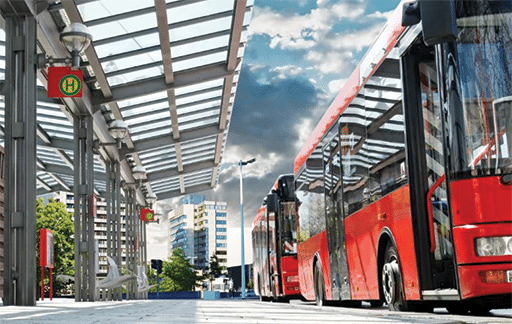
Here’s the problem: The lithium-ion batteries being used to propel today’s electric vehicles draw their electricity from multiple onboard power cells. A fire could occur if one or more of these power cells overheat due to charging issues or external/internal damage — potentially causing a thermal runaway event that results in a fire.
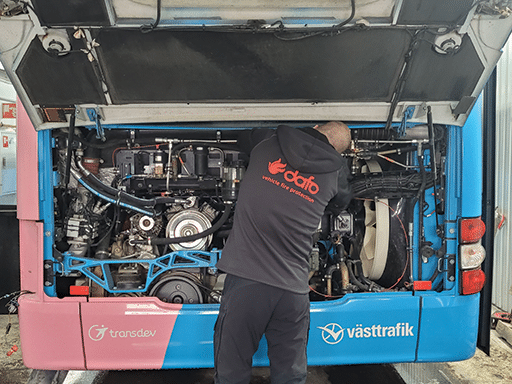
The solution: With the Amerex SafetyNet EV gas detection system, sensors are strategically placed in and around the vehicle’s battery compartments. These sensors detect off-gasses emitting from battery cells at trace levels, long before they approach the level of a thermal runaway event. When a danger level is detected, the system sounds an alert that gives the driver time to pull over, leave their vehicle, and dial 911 for help.
“As businesses and municipalities began to increase their investment in electric vehicle fleets, we saw the need to develop the technology to protect people and property,” explained Amerex chief executive officer Harrison Bishop. “Our team worked tirelessly to develop a solution to provide this additional measure of lifesaving detection.”
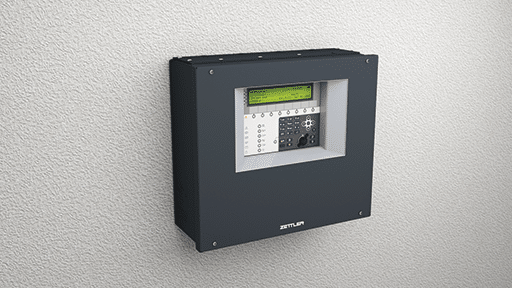
Bosch: Protecting Airports and Transit Stations
Bosch produces a range of intelligent fire detection solutions for sectors such as airports and transit stations, hospitals, hotels, and industrial/manufacturing facilities. The company’s Avenar line of automatic fire detectors includes smoke detectors for air ducts and open spaces. They also sell flame detectors that can register fires invisible to the naked eye. These include smokeless liquid and gas fires, and materials and substances that emit carbon in their smoke.
“International airports cover hectares of land and comprise not only facilities for air travel, but also connect with train and bus stations, vehicle hire services, hotels and multiple parking lots,” said the company’s website. “A fire at any one of these major activity points could impact all others with a need for evacuation and inspections. Thus, a highly reliable network of fire and smoke detection and alarm systems with PA facilities is needed for efficient response times in case of emergency.”
To prove its point, Bosch cited a fire detection system installation it executed at Cambodia’s Phnom Penh International Airport. “To keep everyone and the building safe from harm and to prevent any service bottlenecks, effective fire protection planning was essential,” said the Bosch website. “Bosch fitted all constructions on the site with a fire alarm system, and special optical and linear-beam smoke detectors, as well as static and moving surveillance cameras. The Public Address and Voice Alarm Systems alert personnel whenever real signs of fire or smoke are detected.”
Dafo Vehicle Fire Protection: Making Bus Passengers and Drivers Safer
Whether they are conventional diesel models or alternative fueled vehicles, buses are vulnerable to fires in their engine compartments. Unfortunately, the speed with which unchecked fires can spread can quickly destroy entire vehicles, while putting the lives of passengers and drivers at risk.
Reducing this risk by extinguishing bus engine compartment fires is the goal of Dafo Vehicle’s fire suppression system. According to Dafo Vehicle’s website, this system consists of four integrated elements; namely Detection, Alarm, Suppression, and Control. All four work together in a coordinated, efficient manner to suppress fires fast. The system’s control unit has a Real-time Clock and Event Log that records and allows access to historical data, so that any previous incidents can be analyzed and addressed.
“The detection system consists of a linear heat detector wire,” said the Dafo website. “It has a fixed temperature sensor with an alarm signal triggered when the activation temperature of 180 C is reached. This signal punctures the burst disc of the propellant gas cartridge, which releases nitrogen into the agent container. The (non-corrosive and environmentally friendly) Forrex liquid is distributed to the nozzles through the pipe system. At the same time, the alarm system is activated, and an alarm horn in the vehicle and a light signal in the panel will warn the driver. The liquid agent will push away the oxygen, cool down the overheated engine parts, impregnate the burning material, stick to surfaces and effectively prevent re-ignition.”
According to Jonas Bergström, the company’s business manager of bus and coach, ”passenger safety is a top priority for Dafo Vehicle. Creating a fire suppression system that combines superior reliability with a valuable low TCO is a challenge that our engineers have solved in an impressive way.”
Fike: Fighting Thermal Runaway Fires with Fike Blue
We have already seen that thermal runaway fires are a real problem in electrical vehicles, or indeed any system that relies on lithium-ion batteries as a power source. This is why a new fire suppression product from Fike Corporation is such welcome news. Fike Blue “is the first solution tested and proven to put out a lithium battery fire by eliminating the cascading thermal runaway event and the possibility of reignition,” said the company website.
Here’s how Fike Blue — a special fluid within a pressurized canister — works. When a fire/heat anomaly is sensed by a third-party detector or a Fike DTS (Distributed Temperature Sensing) cable, the Fike Blue control panel releases the solution into a piping system in the protected area, with the system only opening a nozzle nearest to the heat source. The Fike Blue solution soaks the affected batteries, smothering the fire while extracting its heat.
“With a boiling point of more than 400 C, the liquid absorbs the intense exothermic heat produced from thermal runaway without breaking down,” said FikeBlue.com. “The temperatures for all cells dramatically decrease over the course of several minutes until the event and chance for re-ignition is over.”
At present, Fike Blue has been configured to protect fixed lithium-ion battery banks in renewable energy storage systems, rather than electrical vehicles. However, given its usefulness in stopping thermal runaway events, one can imagine some version of this system being developed for the EV market as well. In the interim, airports and other transportation facilities that use lithium-ion power storage would be wise to give Fike Blue some consideration. It is apparently a real solution to a problem that dogs the lithium-ion sector.
FireFlex Systems: Detecting and Dousing Class B Fires
Class B fires are the ones that involve flammable gasses and/or liquids linked to propane, natural gas, gasoline, kerosine, petroleum greases, tars, oils, oil-based paints, solvents, lacquers, or alcohols. These are extremely dangerous fires that can’t be doused by water, which simply spreads the flames around. This is why Class B fires in garages and hangars are often extinguished using pre-installed Compressed Air Foam (CAF) systems. Sprayed throughout the affected area, CAF is created by combining air, water and foam concentrate to generate and dispense a homogeneous foam solution that is physically similar to shaving cream.
FireFlex Systems makes Class B fire detection and dousing systems that are well-suited to the transportation industry. In the latter category, FireFlex’s “ICAF compressed air foam system is FM Approved as a local application extinguishing system for class B pool fires, spill fires and cascading fires,” according to the company’s website. According to this company, “ICAF uses four times less water and up to six times less foam concentrate compared to foam-water systems.” This makes it economical to use as well as effective.
When fires do occur, it is vital for firefighting crews and evacuating personnel to be able to see what’s happening on the fire scene. According to FlexFlex, CAF’s “unique physical properties significantly reduce steam production” when compared to conventional water-based extinguishing systems, ensuring better visibility during and after a fire. The reason? The CAF blankets the fuel surface, thus not causing “the visual impairment often associated with high-expansion, total flooding foam systems.”
Honeywell: Providing Self-Testing Smoke Detectors
Smoke detectors are an essential element of any fire detection system. However, these devices can only do their jobs if they are fully functional. Ensuring that they are requires ongoing testing by building operators, which can be a very demanding task if the spaces being protected are large and equipped with numerous smoke detectors.
Fortunately for airport and transit station operators, Honeywell has addressed this problem with a fire alarm system that comes with UL-approved self-testing smoke detectors that can be tested automatically. The NOTIFIER INSPIRE fire alarm system with self-test detectors is an all-in-one fire system designed to deliver reliable protection, efficient monitoring, and easy expansion, in addition to flexible and timely reporting. These detectors report to Honeywell’s Connected Life Safety Services (CLSS) cloud-based platform, to make system monitoring and troubleshooting possible from remote locations.
“Honeywell is integrating intelligence across all aspects of fire and life safety systems,” said Jurgen Van Goethem, Honeywell’s president of Fire Life Safety Systems. “By digitizing the most essential system in the building, we’re creating efficiencies during commissioning and maintenance, we’re further improving system reliability and we’re improving the end-user experience. We’re also working to change building owners’ mindsets to think about fire and life safety systems not just as a necessary system to be able to occupy the building, but as a system with a wealth of data that going forward, we can tap into to ultimately better protect lives. This will help move the industry toward the creation of safer and more compliant buildings.”
Worth noting: NOTIFIER INSPIRE’s modular design makes it easy to add new fire detectors as buildings are expanded. Meanwhile, these units’ self-testing features are so sophisticated, that they introduce small amounts of heat and smoke into their own detection chambers to check their photo and thermal sensors, along with verifying that their smoke entry points are unobstructed.
Johnson Controls: Addressable Fire Detection for Small Watercraft
Fire detection is as important on small boats as it is on large ships. This is why Johnson Controls has released the Zettler T1306, which the company bills as “the first addressable alarm panel … specifically developed for use within small-scale marine vessels.” According to this company, using addressable technology allows mariners to quickly and clearly pinpoint fire locations in their vessel, speeding up response times while allowing muster protocols to be tightened up.
“With the global maritime industry quickly evolving and experiencing a phase-out of conventional fire alarm control units, our customers need an approved fire panel that offers the latest addressable technology with the quality and reliability they expect from Zettler products,” said Paul Grainger, product manager with Johnson Controls Fire Detection Products. “This new panel not only provides addressability and reliability at a competitive price, it also simplifies installation and maintenance and contributes to a low lifecycle cost.”
Capable of supporting audible and visual alarms, the T1306 is equipped with two full-powered loops. These can be split into six shared power loops, which are capable of connecting up to 500 sensing devices in total. The alarm panel can be located within the bridge, or remotely coupled to this command center using an in-bridge repeater to save space. It features an easy-to-understand LCD display, plus robust controls that can withstand harsh marine environments.
The T1306 comes with a 24-hour battery capacity, has built-in fail-safe capabilities and comes with advanced control panel technologies that reduce false alarms. It also offers a top and bottom entry gland plate, communication via Modbus to gateway (SMS/MIS), and a four-panel capacity when installed in a master/client configuration. The T1306 fire alarm panel has an IP32 rating and has attained various global industry approvals such as EN54, MED, ABS, BV, DNV GL, KRS, LRS (IACS) and CCS.
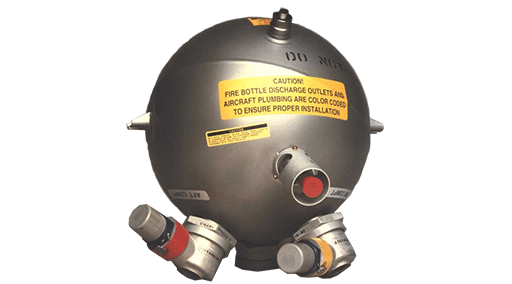
Kidde Technologies: Keeping Aircraft Safe
Fire in an aircraft is a terrifying possibility that offers deadly consequences. Passengers and pilots can’t evacuate at 30,000 feet. This is why Kidde Technologies makes a number of fire suppression products aimed at keeping aircraft safe. It starts with a range of fire suppression hardware that employ single and multi-outlet spherical, cylindrical or radial tubular containers to hold liquid extinguishing agents, which are made from durable stainless steel or titanium. This product range also includes solid propellant-based suppression devices and dedicated electronic modules for system monitoring and control. These modules can be configured to be manually controlled by the crew, or activated automatically when fire conditions are detected.
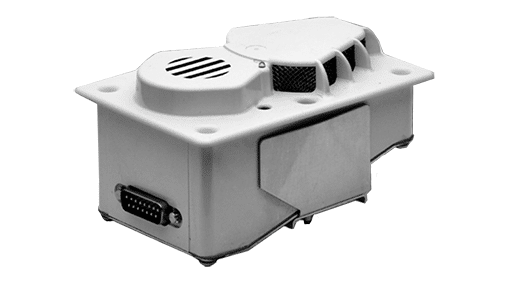
Fires in aircraft lavatory washrooms, caused by people smoking and then throwing still-lit cigarettes into waste bins, are a serious threat to aircraft in flight. This is why Kidde makes a Lavatory Waste Bin Extinguisher to address this danger. Available for Boeing and Bombardier aircraft, these units use proven, existing hardware to fight waste bin fires as soon as they exceed a temperature of 170 F (77 C). When this threshold is crossed, the Lavatory Waste Bin Extinguisher releases inert nitrogen under pressure through its discharge nozzles, over a period of three and five seconds.
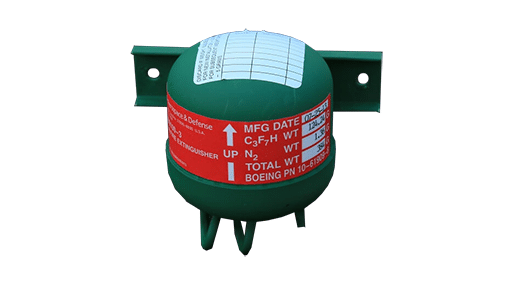
Kidde also makes advanced photo-electric smoke detectors for aircraft cabins and lavatories, which can be installed without any changes to aircraft cabin/lavatory structures or existing wiring. According to the company, these smoke detectors are compliant with environmental legislation, use dual-wavelength technology to minimize false alarms due to “nuisance aerosols” and provide improved fire detection capabilities even at high altitudes.
Strengthening Cargo Security Across the Supply Chain
Cargo security keeps goods safe. On freighters, docks, trucks, railcars, warehouses, and ports, cargo shipments are vulnerable to theft during several stages of the transit process. If a container isn’t properly and securely sealed, it can be opened many times during transit with its contents stolen and easily sold on the black market.
Stolen cargo can cost suppliers thousands to upwards of millions of dollars. An estimated $223 million in cargo was stolen during 2022, according to a new analysis by Verisk’s CargoNet. CargoNet recorded 1,778 supply chain risk events in the U.S. and Canada in 2022, a 15% increase from 2021. The average value of cargo stolen in an event was $214,104, CargoNet said.
The consequences of not sufficiently protecting cargo can be devastating, ranging from financial loss and damaged reputation to long-term, intricate legal disputes. And, today’s thieves are now highly tech-savvy and constantly developing modern ways and strategies to steal cargo from shippers. Because of this, more advanced container security measures have been developed helping to reduce burglaries and resulting theft claims.
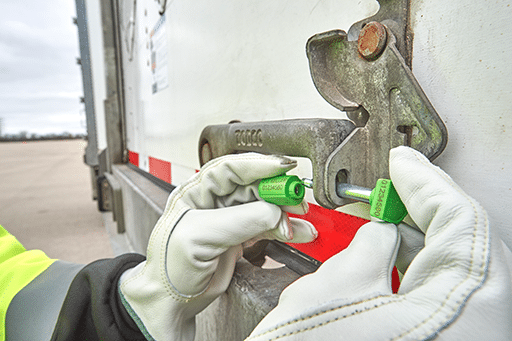
J. J. Keller image.
Best Practices
Josh Lovan, industry business advisor at J. J. Keller & Associates, Inc., Fort Smith, Arkansas, explains that ensuring cargo security during transit is crucial and cites the following best practices to make this happen:
• Use High-Quality Seals: Invest in security seals made of durable materials like metal or heavy-duty plastic. Avoid using seals that can be easily tampered with or broken.
• Proper Application: Apply seals correctly, ensuring they are securely fastened to prevent tampering or unauthorized access.
• Unique Identification: Use seals with unique serial numbers or barcodes for easy tracking and identification. This helps in verifying the integrity of the cargo.
• Regular Inspections: Conduct routine inspections of seals and locks throughout the transit process to detect any signs of tampering or damage.
• Multiple Layers of Security: Utilize multiple layers of security, such as container locks in addition to seals, to provide added protection against theft or unauthorized access.
• Security Protocols: Implement strict security protocols and procedures for handling, loading, and unloading cargo to minimize the risk of tampering or theft.
• Monitoring and Tracking: Employ GPS tracking systems or other monitoring technologies to track the location and status of cargo in real-time, providing visibility throughout transit.
• Training and Awareness: Train personnel involved in handling cargo on security protocols and the importance of maintaining the integrity of seals and locks.
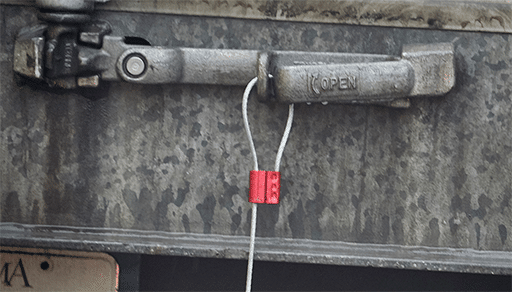
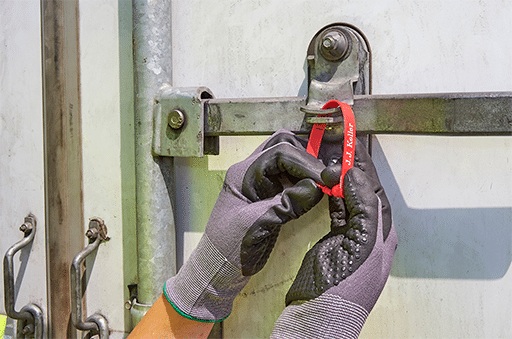
J. J. Keller images.
Seals and Locks
Security seals and container locks are requisite to keep cargo secure in transit. Not all seals and locks are created equally. Each type of seal or lock offers different levels of security and suitability for specific applications.
Different industries employ a variety of security seals tailored to their specific needs and cargo requirements. For instance, the transportation industry relies on heavy-duty seals like bolt seals or cable seals to secure shipping containers and trailers, safeguarding valuable goods during transportation. Industries dealing with retail and consumer goods prioritize tamper-evident seals with unique identification features to maintain the integrity of products as they move from manufacturers to retailers.
“Pharmaceutical and healthcare companies often opt for advanced seals equipped with RFID technology, enabling real-time tracking and monitoring of sensitive pharmaceutical products to comply with stringent regulatory requirements and maintain product integrity,” Lovan says. “The food and beverage industry may utilize seals designed to withstand environmental factors and provide clear evidence of tampering, ensuring food safety and compliance with regulatory standards.”
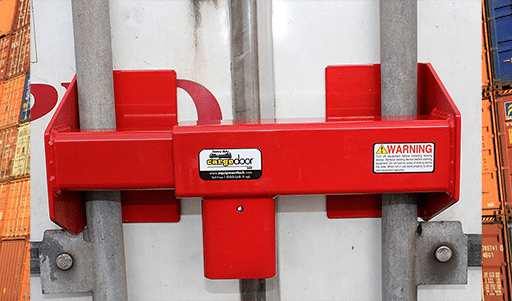
It’s essential to assess your cargo security requirements and choose the appropriate seals and locks accordingly. Overall, Lovan believes the choice of security seals varies across industries based on factors such as cargo value, sensitivity, transportation mode, and regulatory compliance needs, with each industry selecting seals that best meet their unique security requirements. He cites the following types of security seals and container locks available for cargo security.
• Bolt Seals: These are high-security seals that require bolt cutters to remove, making them difficult to tamper with.
• Cable Seals: Made of steel cables, these seals are flexible and suitable for securing irregularly shaped items. They offer high tensile strength and are resistant to tampering.
• Bar Seals: These seals feature a metal bar that is inserted into a locking mechanism, providing a secure closure for containers and trailers.
• Plastic Seals: These seals are commonly used for securing shipping containers, trucks and trailers. They are lightweight, cost-effective, and offer tamper-evident features.
• RFID Seals: These seals are equipped with radio frequency identification (RFID) technology, allowing for electronic tracking and monitoring of cargo in real-time.
• Kingpin Locks: These locks are installed on the kingpin of a trailer, preventing unauthorized access to the container when it is attached to a truck.
• Wheel Locks: These locks are placed on the wheels of trailers or containers to prevent them from being moved or accessed without authorization.
Below are criteria for determining the best seal for your application:
• Determine if an indicative or barrier seal is required.
• If using a barrier seal, determine what strength level is needed.
• Make sure that the seal type that you choose fits the device.
• Choose a seal that has the appropriate level of strength and security.
• Measure seal cost vs. security risks.
• Use a manageable locking system considering the tools and resources you have at your disposal.
• Consider the durability of the seal in relation to its environment.
• Below are criteria for handling and use of cargo seals:
• Know the locking procedure, design and features of this seal.
• Give seals only to authorized persons.
• Document all seals taken from storage.
• Apply seals securely according to instructions for this model. Note any problems or unusual visible damage like bent hasps, worn holes, unusual conditions or cosmetic damage to seals in applying.
• Destroy seals completely after use. Do not simply toss them out or leave parts or cut seals intact; or under conditions where they may be collected by others. Ideally it is good practice to return them to a central facility for destruction by an authorized and trained inspector.

Reliable Line of Defense
While these locks and seals are a reliable line of defense, criminals can compromise security seals and container locks through various methods such as brute force, and tools like bolt cutters to break seals or manipulate locks. They also employ tampering techniques, like duplicating seals or picking locks, to gain unauthorized access to cargo.
C-TPAT stands for Customs-Trade Partnership Against Terrorism. Founded shortly after the terrorist attacks of September 11, 2001, C-TPAT is a voluntary, collaborative effort between U.S. Customs and Border Protection (CPB) and commercial shippers to develop comprehensive cargo security programs for imports into the U.S. To further prevent theft, C-TPAT seals are security seals affixed to cargo containers by C-TPAT certified entities, signifying compliance with rigorous security standards. These seals serve as an indicator of a secure supply chain, facilitating expedited customs clearance and reducing the risk of cargo tampering or terrorism-related threats. C-TPAT seals may feature unique identification numbers or barcodes, allowing for easy tracking and verification of cargo integrity.
GPS Tracking
With numerous companies and transportation methods involved throughout the transportation chain, pinpointing when and where a cargo security issue occurred can be daunting. Implementing a GPS tracking solution on cargo shipments provides suppliers with the ability to track their cargo throughout the entire journey, adding invaluable insight and security.
“With so many transportation methods and entities involved, cargo can be lost or delayed along the way,” says Jeff Karg, director of marketing and communications, PassTime, Littleton, Colo. GPS tracking devices for cargo shipments give the supplier their own tracking solution and are not reliant on the varying and sometimes non-exist tracking solutions from their transportation providers.”
Solutions like PassTime’s battery-powered Encore, are completely self-powered, can last up to five years without recharging, and at the size of a deck of cards, can quickly and easily be placed on just about any cargo shipment.
“Utilizing battery-powered GPS tracking solutions on the cargo itself means suppliers know if their cargo is still in transit, or more importantly, if it isn’t,” Karg says. “Locks and seals are an important aspect of cargo security. However, if the cargo container itself is lost those safeguards may have limited impact. Adding an additional layer of security, like a GPS tracking solution, can provide unparalleled visibility, control and protection to locate and recover missing cargo.”
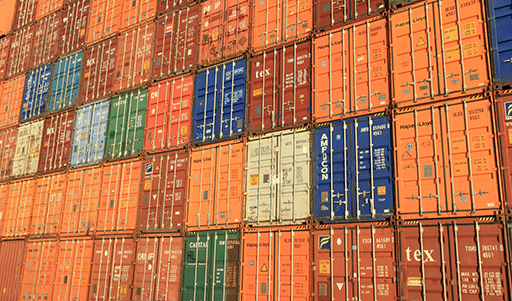
Smart Containers
Smart containers are equipped with sensors that can detect intrusions like unauthorized door openings as well as anomalies such as a sudden change in container pressure or temperature (like when a hole is cut into the side wall of a container) that could indicate a breach.
Smart containers also have other integrated sensors such as GPS as well as additional internal sensors to measure the condition of the cargo inside. Data from the container’s sensors are either logged on a data module within the container, or it’s broadcast to a central monitoring platform via handheld readers, fixed scanners, or GSM/cellular connections.
Another, probably more viable option to (expensive) smart containers is the use of portable smart sensor kits that can be fixed to/within any standard container or truck trailer. These “smart kits” can turn any shipping container, truck trailer, or rail car into a “smart container,” giving logistics operations greater supply chain visibility for high-value cargo like pharmaceuticals, volatile chemicals, frozen food and other cold chain products.
The Human Element
Most theft crimes are not investigated because of manpower issues, so it is imperative that carriers take the necessary measures to prevent theft. Provide security training to all personnel, because everyone should be involved with protecting customer freight and company assets. Lovan says drivers can proactively deter theft by adopting the following prevention measures:
• Check the cargo seal and padlock during pre-trip and after being away from the unit.
• Never leave the tractor running when unattended.
• Always lock the doors and roll up windows when away from tractor.
• Always park in well-lit areas where other motorists are present.
Fleets can deter theft by implementing the following security polices during closed hours:
• Ensure trailers are docked, butted, and blocked at the terminal.
• Utilize kingpin locks for trailers that contain high value freight.
• Ensure that alarm systems are functional by conducting weekly tests.
• Utilize GPS technology to geofence equipment on the yard.
While no cargo being transported is completely immune to the risk of theft, the right technology will help to mitigate these problems to a great extent and help to ensure safe transportation of cargo. Anticipate and use security developments to your advantage, stay one step ahead and keep your cargo secure.
Building Resilience Against Critical Events
Critical events can affect any transport operator. Accidents, problems with infrastructure including vandalism, fires — such as those seen recently on electric buses in London — extreme weather events and cyberattacks have an immediate and often highly disruptive impact. While many incidents are resolved quickly, the knock-on effect on the reputation of the operator can be long-lasting, inconveniencing employees and passengers, and, in extreme cases, even threatening their lives.
It is therefore essential for transport organizations to build in resilience measures. This is, in part, the ability to anticipate the types of emergencies that might arise and adopt practices that minimize the impact of these crisis events on their operations. This type of approach ensures the safety of their employees and passengers and assists in resuming normal services quickly.
The success of operational resilience relies on several factors, the first of which is corporate culture. An organization’s resilience reflects the resiliency of its people, so public transport operators must invest in training programs, mentoring, and delivering resources that are inclusive for employees, and promote their well-being. Employees who are engaged and listened to will be better able to manage emergencies and equipped to confidently put practices in place to minimize disruption. Adopting an approach of employee collaboration through which teams and individuals are recognized for their successes and able to learn from their mistakes helps to cultivate collaboration and enables better teamwork in a crisis.
Continuously Assess Potential Risk
Proactive risk management coupled with agreed contingency plans that are regularly assessed and updated is essential. A list of the appropriate experts, technicians and helpers should be drawn up and these will be the first port of call when a critical event occurs. If companies fail to communicate in a timely manner during a crisis, they will lose control of the incident and the agreed response plan. Aligning actions to the right people ensures clarity of message, averts rumors, such as on social media, and keeps employees and passengers updated with accurate and timely information.
A comprehensive communications plan for use during a critical incident should be devised by transport operators. This outlines processes and those with responsibility for communication, who talks to whom and when, and what information they share. In addition to internal contacts, there may be external groups, such as passengers, partners of employees, or the public, that will require communications and updates. As public transport companies operate critical infrastructure, there may also be an obligation to report to the authorities.
Planning saves time and effort in an emergency. Messaging templates, for example, can be created in advance to help employees communicate efficiently and accurately. These will need to contain specific information to suit a variety of audiences and situations, but key messages must be consistent and not contradictory so everyone involved can be kept on the same page. Transport operators should plan for multimodal communication. The more channels they use, the more likely they are to reach all audiences. Ideally, messages should be sent through the most used channels today such as SMS texts, push messages, email, and voice messages and on both personal and work landlines and mobile phones. Practicing the procedures that have been agreed upon will allow transport operators to ensure they work efficiently without the pressure of a crisis. Any problems can be identified and addressed.
Building Resilience with Technology
Organizational resilience can be enhanced immeasurably by technology. Transport operators will benefit from an integrated critical event management (CEM) software solution that connects business continuity, disaster recovery, and risk management tools. This allows them to assess risk, seamlessly disseminate information across teams, and avoid disruptions that get in the way of responding quickly to a critical event. At the core of a CEM platform is a data hub that collates all the information relevant to an emergency and manages all the necessary processes.
Information that informs a CEM platform ranges from IoT device data monitoring traffic infrastructure and vehicles through to employee location data. It also includes police channels on social media, traffic information, or severe weather warnings. The platform brings this data together and visualizes it so transport companies can be quickly alerted to likely crises, assess the impact on their own systems, and initiate responses. From this, teams with responsibility for communicating critical events can coordinate activities, teams, and resources within a single application.
Emergency processes can be quickly implemented and controlled in a CEM solution in the form of rules, guidelines, and templates and it will automate those processes using a workflow system. This reduces the time that might be lost to manual activities. The CEM platform should support two-way communication allowing people to respond, which is helpful in terms of knowing who is safe, where people still need help, and whether the level of response needs to be escalated.
Transport operators face many risks but with intelligence, strategic planning and a robust crisis communication plan in place, they will be able to maintain operational resilience and protect both employees and passengers in the event of a crisis.
Tracy Reinhold is chief security officer at Everbridge. He is responsible for advancing Everbridge’s enterprise-level security strategy, as well as working closely with customers and partners to optimize their organizational approach to managing and responding to critical events.
These Four Trends Are Putting Digital Identities in the Spotlight
Digital identity solutions are not only the basis for secure and convenient travel, they are also the key to important services and greater control over personal data. Four key trends are currently crystallizing in identity technologies.
Digital identification and identity solutions are an important part of global technological progress. In addition to simplifying and streamlining processes such as dealing with government agencies or traveling, proof of identity is directly linked to fundamental human rights. For these reasons, the development of technologies and solutions plays a crucial role. And there has been a lot of progress. Veridos, a global leader in identity solutions, outlines here the four most important trends and developments in the field of identity technologies:
Travel is becoming more digital and more secure. New technologies are paving the way for a new level of security in electronic passports. Self-check-in terminals and biometric data on microchips, for example, are helping to speed up the boarding process at airports. The next step in this development: the physical passport will no longer be the only way for travelers to verify their identity. With Digital Travel Credentials (DTC), the travel document of the future can also be displayed completely digitally and much more conventiently – on a mobile phone or smartwatch, for example.
The passport is becoming more sustainable. The travel and tourism industry is responsible for an estimated eight to eleven percent of global emissions. To meet the industry’s commitment to reducing its carbon footprint, research is increasingly focusing on recycled materials for documents that can ensure more sustainable supply chains. The days of passports with virgin plastic-based components may soon be numbered in favor of new, eco-friendly ID documents. The digitization of ID documents can help reduce the need for physical ID cards.
Self-Sovereign Identity (SSI) is becoming relevant. Self-sovereign identity puts individuals back in control of their data. This revolutionary concept allows individuals to choose what information to share, when, and with whom. Presenting an ID card to a car rental company, for example, reveals a great deal of sensitive information about an individual, whereas an SSI solution allows for the selective release of required information. With this zero-knowledge proof approach, citizens will be able to protect themselves very effectively against data mining and misuse of their information in the future. But SSI also has great advantages on the digital level – for example, the technology can be used as an identification process in the Internet of Things. Drivers could use it to confirm their identity at electric charging stations, for instance, without having to do anything themselves.
Identity is becoming increasingly digital. People without legal proof of identity are denied access to essential services and human rights, such as voting, education and banking. That is why the United Nations has set a goal of enabling everyone to register their identity by 2030. Universal solutions from leading providers are increasingly focused on digital and phygital technologies – a mix of digital and physical technologies. Not only are they more secure and convenient than purely physical ID cards, they also open doors to electronic services, are easier to manage and offer higher levels of security.
“The world is becoming increasingly digital. We see a growing expectation among users to be able to store important documents on mobile devices,” said Marc-Julian Siewert, CEO of Veridos. “There is certainly still a long way to go before government documents are fully digitized, but the groundwork has been laid and research is making great strides.”
Biden-Harris Administration Announces Nearly $1 Billion in Grants from the Bipartisan Infrastructure Law to Improve 114 Airports Across the U.S.
The Federal Aviation Administration (FAA) is awarding $970 million from President Biden’s Bipartisan Investing in America agenda to 114 airports across the country, spanning 44 states and three territories. This announcement, which Secretary Buttigieg will make as part of the Administration’s Investing in America tour, delivers on President Biden’s commitment to rebuilding our nation’s infrastructure while lowering costs for families, creating good jobs, and advancing opportunity for all Americans.
This funding will help meet the growing demand for air travel and launch projects that will improve passenger experience, accessibility and sustainability while creating good-paying jobs. Investments enhancing the passenger experience include new baggage systems, larger security checkpoints, increasing gate capacity and modernizing aging infrastructure throughout terminals and ground transportation. These investments further increase terminal sustainability and improve accessibility for individuals with disabilities. Nine grants will address the needs of aging air traffic control towers.
“Under this administration, we are doing more to improve the travel experience than ever before, from expanding consumer protections to modernizing the physical infrastructure,” said U.S. Transportation Secretary Pete Buttigieg. “These investments we’re announcing today, made possible by President Biden’s historic infrastructure package, will make it easier for passengers to get to and through airports, create jobs, and increase safety for all.”
“Today’s funding not only helps modernize airports to meet the needs of travelers today and for years to come but also creates good-paying job opportunities in communities both large and small,” said FAA Associate Administrator for Airports, Shannetta R. Griffin, P.E.
These awards are on top of the nearly $2 billion for airport terminals announced over the past two years. The vast majority of these terminal projects are under construction.
Many grants contain an element that will build new or expanded terminal facilities. Among them are:
- $35 million to Washington Dulles International Airport in Virginia: This award funds a portion of the construction of a 14-gate, 400,000 sq. ft. terminal building including connections to the Aerotrain and Metrorail.
- $20 million to Salt Lake City International Airport in Utah: This award funds a portion of the Concourse B terminal expansion that will include 16 gates.
- $10 million to Hector International Airport in Fargo, North Dakota: This award funds a portion of the rehabilitation and expansion of the existing terminal. Rehabilitation includes upgrades to lighting, reconfiguration and expansion of hold rooms, and improve Americans with Disabilities (ADA) compliance. Expansion includes four new gates for a total of nine, increasing hold room space, expanded ticketing/baggage handling, expanded restrooms and post-security concessions.
Many grants contain an element that will improve the passenger experience by improving security-screening areas, providing faster and more reliable baggage systems, and increasing accessibility for passengers with disabilities. Among them are:
- $40 million to Chicago O’Hare International Airport in Illinois: This award funds improvements to Terminal 3 to include increasing the central passenger corridor width, a reconfigured TSA checkpoint, new hold room, a new ADA compliant and family restroom, and updates to the baggage system.
- $26.6 million to Denver International Airport in Colorado: This award funds a portion of the baggage handling system replacement, including the control system. In addition, the new system will improve energy efficiency and increase capacity.
- $8.6 million to Kahului Airport in Hawai‘i: This project funds the construction of a new two-story security screening checkpoint facility at the south end of the ticket lobby (South TSA Checkpoint). The facility will include six new TSA screening lanes. A pedestrian bridge will connect the new checkpoint facility to hold room A and will span over the existing service road.
- $7.5 million to Louisville Muhammad Ali International Airport in Kentucky: This award funds a portion of the Terminal A security screening expansion project, which consists of adding four screening lanes to the security checkpoint.
- $2 million to Spokane International Airport in Washington: This award funds up to two additional ticket counters and passenger boarding bridges, and portions of the HVAC, mechanical, electrical, plumbing upgrades, shared use & hearing-impaired technology, smart glass, solar energy connection, baggage handling systems, and other considerable ADA improvements.
- $1.5 million to Ted Stevens Anchorage International Airport in Alaska: This award funds the installation of 110 audio and visual monitors and stations throughout the terminal to better serve the passengers.
Many grants will increase access to other modes of transportation or improve roadways. Those include:
- $31 million to Los Angeles International Airport in California: This award funds two areas of the Auxiliary Curbs at ITF West and ITF East which includes a combination of new, extending, widening, and utility improvements of surrounding roadways. This also includes underground Low Impact Development (LID) storm water containment systems.
- $8 million to Southwest Florida International Airport in Fort Myers, Florida: This award funds a portion of the reconfiguration and expansion of the terminal access and curbside roadways.
- $7 million to Louis Armstrong New Orleans International Airport in Louisiana: This award funds construction of the foundation for the North/South Connector Road’s north phase. The foundational piling operations will provide structural resiliency to withstand future climatic events, which have deteriorated the soil and created environmental concerns in past years. The new road will connect the airport’s North and South terminals and will link the terminals to the airport’s upcoming multimodal transit facility that has passenger rail service.
Nine grants are awarded to airports to refurbish their airport owned airport traffic control towers. Among those are:
- $10 million to Duluth International Airport in Minnesota: This award funds the relocation of an Airport Owned Airport Traffic Control Tower, a non-standard tower commissioned in 1963. The project includes design, project formulation, site preparation, line of sight obstruction removal, and other related actions.
- $5.4 million to Martin State Airport in Middle River, Maryland: This award partially funds a new Airport Traffic Control Tower that has reached the end of its useful life.
- $4.5 million to Valley International Airport in Harlingen, Texas: This award funds approximately 25% of the construction costs of a new sponsor owned Airport Traffic Control Tower. This project replaces the existing tower that has an identified line of sight impediment, is not ADA compliant, and has structural integrity issues. Funding for this phase focuses on the foundation and base of the tower construction.
Many grants contain an element that will increase terminal sustainability. Among them are:
- $31 million to San Francisco International Airport in California: This award will replace critical mechanical and electrical components (VFDs, fans, dampers, actuators, control valves, sensors, and other associated elements) of the HVAC system at the International Terminal. Replacing these components will improve fire-life safety compliance, reduce energy usage, reduce maintenance costs, and improve resilience.
- $27 million to Charlotte Douglas International Airport in North Carolina: This award funds the replacement of up to 16 Passenger Boarding Bridges and associated Ground Power Units and Pre-Conditioned Air units.
- $3.4 million to Appleton International Airport in Wisconsin: This award funds the Expansion and Modernization Project that includes a four-gate concourse expansion and will include a 60,000 sq. Ft. expansion increasing the number of gates to 10. This award will partially fund the final phase of the concourse expansion project, including Passenger Boarding Bridges, a solar and sustainability program, and mechanical equipment.
Several grants contain an element that will go to improving airport access in smaller communities. Among them include:
- $10 million to Punta Gorda Airport in Florida: This award funds a portion of the terminal rehabilitation and expansion project, which includes renovating the security checkpoint and adding public circulation, hold room, and restroom space.
- $6.5 million to Presque Isle International Airport in Maine: The airport will construct a new terminal to replace the existing undersized terminal. The new terminal will be ADA compliant, include appropriate life safety upgrades, and improve energy efficiency. This award will fund the early stages of the project, including construction of the superstructure and building enclosure.
- $700,000 to Standing Rock Airport in Fort Yates, North Dakota: This award funds construction of a new general aviation terminal building. There is no current terminal building, or other protective structures, for pilots to get out of the elements. The airport is used for recreational activity along with flights for medical emergencies and delivery of hospital and emergency staff to the area.
Dexory Aims to Re-define North American Logistics and Warehousing Technology Market
er of cutting-edge AI and robotics solutions, has announced its expansion into the North American market. Dexory is set to disrupt the market through its autonomous robotics and AI-powered analysis solution, DexoryView. The company is already working with global partners with a significant U. S. presence such as DB Schenker, Menzies Aviation, Maersk and ID Logistics. To lead the expansion, Todd Boone has joined the team as its Head of North American business.
The driving force behind the expansion is the rapidly evolving landscape of logistics and warehousing. End customers continue to demand quicker turnaround times while warehouses address the urgent needs for improved space utilization and increased efficiencies while wrestling with ongoing labor scarcity. Dexory combines powerful analytics with autonomous robots capable of capturing rich image and sensor data from across a warehouse. This powerful combination provides comprehensive visibility across warehouses of any size, as well as connecting warehouses across the global supply chain through Dexory’s digital platform, DexoryView.
One customer that has recently deployed Dexory’s solutions in its warehouses is the international contract logistics group, ID Logistics. The collaboration aims to increase warehouse operation accuracy and enhance overall efficiency to improve the service provided to their customers.
Benoit Boiron, group Innovation manager at ID Logistics commented, “This collaboration marks a significant milestone in the evolution of inventory management and warehouse data acquisition. The precision and real-time monitoring capabilities have transformed our day-to-day operations, bringing accuracy to new heights.”
“Following successful customer deployments in Europe, we have seen an increased demand from the North American market,” said Andrei Danescu, CEO and co-founder of Dexory. “We are excited to be expanding our offering and see that there is tremendous opportunity in the region. Organizations across the globe are getting to grips with the challenging demands of modern supply chains, and DexoryView allows businesses to gain rapid insights into their operations and make informed decisions that drive better efficiencies across their businesses.”
Dexory says their technology helps businesses to understand, in real-time, what happens in their warehousing operations, which is imperative to closing the visibility gap that occurs when there is a misalignment between expectations and reality. The ever-increasing pace within warehouses is causing the visibility gap to grow, and so worldwide, companies are embracing Dexory’s solution to unlock real-time visibility and insights that minimize the visibility gap while maximizing warehouse performance and reducing costs.
As part of the expansion, Dexory has appointed Todd Boone to lead its North American business. Boone joins Dexory from Zebra Technologies, where he served as director of product management in robotics and automation. With Zebra Technologies he held several leadership roles and worked closely with Fetch, an established AMR provider in North America. Along with his experience in large organizations such as Motorola Solutions and Psion Teklogix, Boone has also acted as an independent advisor for technology companies, providing advice on go-to-market strategies.
“Having an industry veteran such as Todd Boone lead our expansion in the North American region is paramount to our success,” adds Danescu. “Boone has in-depth knowledge of the landscape and the challenges our customers are facing. In addition to this, he is a proven leader and has a track record of delivering value to customers as well as devising strategies that are disruptive and value-driven for our industry. We are pleased to have him on board to spearhead our growth in the region.”
“Many businesses across the globe are struggling with a visibility gap, where they do not have the necessary insight into their warehouse and supply chain operations,” comments Todd Boone, head of North America at Dexory. “The opportunity to lead Dexory’s expansion into the North American market comes at an exciting time for the industry. The technology is truly innovative and disruptive. The combination of robots and DexoryView has already delivered significant benefits to customers in Europe, and North American businesses can expect a transformative effect on the everyday efficiency, productivity and accuracy of their warehouses.”
Floating Sauna Saves the Day
Two people were stuck in middle of icy fjord after escaping a sinking car. Then a floating sauna showed up and rescued the people. According to Reurters, a Tesla crashed into frigid waters in Norway on February 1. The floating sauna then came to the rescue. See image.

